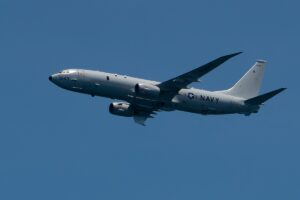
The House-Senate agreement on the fiscal 2023 defense authorization bill mandates that the U.S. Air Force have an inventory of 466 tankers, at a minimum, and 186 Lockheed Martin [LMT] F-22s. In June, Air Force Secretary Frank Kendall said that the service would ask Congress to allow the Air Force to reduce the 479 tanker requirement to 455 (Defense Daily, June 1). Kendall said that the Air Force believed that 455 is "adequate to deal with the [China] pacing challenge…














